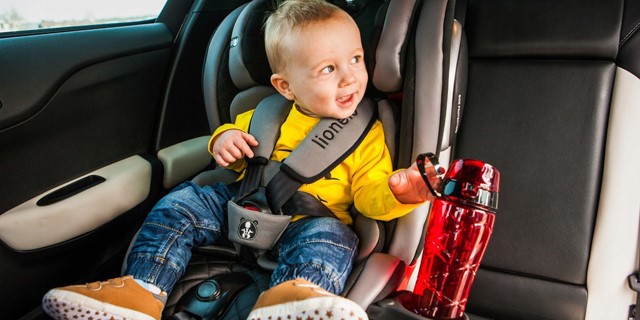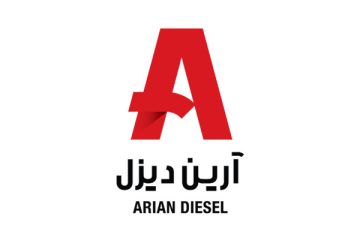Research has shown that many children die in accidents due to lack of safety precautions. Many parents have the opinion that if they hug their child, they can take care of him more and avoid possible dangers. In most cases, the cause of children being injured or killed is not using a Child safety seat in the car or not using a seat appropriate to their weight and age.
In this section of Act Group, you will learn about the topic of child safety seats in car requirements.
In an accident, children are 6 to 7 times more likely to be thrown into the glass than adults, and even if they do not cause death, they will suffer serious injuries.
A child seat in the car makes it possible to minimize the possibility of children getting hurt due to high speed and heavy braking. Studies show that these seats reduce the risk of serious injuries by 78% and the risk of minor injuries by 75%.
Safety first, then movement!
According to experts, the standard child seat should be able to be connected to the main body. In fact, some seats are only connected to the cover without being connected to the body or the car seat belt, which will greatly reduce the safety factor.
Therefore, if the child seat can be connected to the hard and metal body of the car seat, the greatest safety will be provided for the child.
In addition, the child’s seat must have a special belt so that he does not get thrown around due to severe car accidents or severe braking, or does not cause excessive pressure on the child’s body and delicate bones.
These types of belts with a The protective layer is very delicate and soft crosswise.

Everything you need to know about child safety seats
Child car seat classification based on age and weight group:
pic
Note: This type of seat, which can be separated and carried, is designed only for babies aged 6 to 9 months. Otherwise, normal and non-portable seats are designed for newborns up to 2 years old.
Note: Up to 9 months, the health of the child from the head and neck area is very important. It is better to use the zero seat.
Adjustable seat and convertible child safety seat
Adjustable seat and convertible child safety seat to protect children from birth to a maximum weight of 18 kg.
It is used facing forward with a weight of 30 kg or even up to 45 kg facing the front of the car. This seat model is a combination of baby and child seat.
These seats are heavy and not portable, but they can be affordable because there is no need to buy a new seat as your child grows, and they can be used for children from birth to adulthood.
What you need to know about installing a child seat in a car
There are two ways to install the child seat:
- Installing a child seat facing the back of the car babies have a much weaker neck than adults. Therefore, the child seat must be installed against the direction of the car and adjusted so that the child is sleeping.
Please note that the child car seat must be installed exclusively in the rear seats. If you have to put it next to the driver due to special circumstances, be sure to disable the airbag key because it will cause significant injuries to the child and it is very likely that it may cause the child to be thrown or suffocated. - Installing a child seat facing the front of the car = when the child is 2 years old or older, the car seat can be turned according to the movement of the car so that his face looks at the windshield.
Basic rules for child seats in the car
- Fasten the seat belts according to the relevant instructions and pay attention to the seat attachment signs.
- After repairing the child seat, you should check the back angle.
- This index should not be more than 45 degrees. Many models have a special indicator on the base that allows you to Determine the back position.
- Fasten the child with a belt in the back seat. It is important that the shoulder straps are as low as possible and the clip is at the level of the armpit.
- Use soft pads to avoid discomfort for the child to use the seat belt, otherwise the child will behave restlessly due to discomfort. If the belt buckle is not equipped with a pad, you can use a towel.
- Adjust the tightness of the belt (belt tension) which should not slip under it but at the same time do not tighten them tightly.
- You can check the tightness by sliding your finger under the belt, if they pass then the child will be comfortable during the trip.
Types of child seat installation in the car
Fastening with a three-point belt:
position the front seat so that there is enough space to fasten the child safety seat on the back seat of the car. Pull the car seat belt through all the holes in the car seat.
When the belt is tightened according to all instructions, place it in the buckle. The car seat should not be loose.
Tighten the straps so that they do not twist anywhere and hold the child tightly.
Installation with Isofix: First, we introduce you to the word Isofix
- Isofix is a child seat installation system according to the international standard that automatically locks the child car seat or the base of the child seat on the two metal clips or fixing points on your vehicle, and in this case, you no longer need to use the car seat belt.
- Not to fasten the child seat. Isofix support bases are usually between the gap in the seat mat and the back of the rear seat of your car, and if you move your hand between these gaps, you will feel the presence of two clips or support bases.
- These bases are actually the clips holding the car seat lock, which are found at the bottom and back of all child car seats, and you pull them out by pressing a latch or button and install them inside the clips.
- When you have correctly installed the locks on the back of the child seat, it will turn green and you will be sure that you have done your job correctly and you can safely put your child in the seat. Currently, most cars are equipped with ISOFIX system.
- This is the European standard and provides the best protection for the child. This system is located in the form of two brackets along the edges of the support. Locate the Isofix mounting brackets that sit under the headrest and remove the protective caps from them.
- Place the car seat into the rails and press until it clicks.
- Tighten the anchor strap and adjust the base of the car seat. Fasten the belts.
Comparison of installing a child seat in a car using Isofix with a three-point belt
pic
Components of a child seat in a car
- Child car safety seat: The car safety seat provides the most support to the child’s head, neck and spine during an accident.
- Skeleton: Safety seats are made of a dense plastic that can withstand impact but won’t shatter in an accident.
After about 6 years, the plastic may no longer be strong enough and this chair should be retired. Inside the seat, under the cover, you will find pads that are made of a rigid, flexible and shock-absorbing foam to keep the child comfortable and absorb the impact in case of an accident. - Base: The seat base cannot move more than 2.5 cm in any direction when installed. The safety seat hits the headrest and locks into place. Install the base with your car’s seat belt or the latch system, which stands for lower child restraints.
You will find the lower latches on the left and right side of the bottom of the safety seat base. - Baroque seat and base: The cover and pads are made of fabric that is washable and resistant to flame.
When washing them, use warm water and mild soap. Strong chemicals such as bleach can destroy the fabric’s flame resistance. - Harness and buckle: The child will first sit in a safety seat with a five-point harness. The five-point harness has straps that go over the shoulders and hips and connect to the buckle on the crotch strap.
After closing the buckle, the restraint belts should be tight enough on the child’s body that when you want to put a part of the belt between the thumb and the finger.
Keep it to yourself. Let the strap slide out from under your fingers, which is called the pinch test.
For a rear-facing child, the seat belts must be attached to the seat on the child’s shoulders or under the shoulders. - Pad: Internal support pad for the child’s head and hands to be in a better and correct position.
- Seat and base: A seat facing backwards is semi-bent, that is, with an angle of 30 to 45 degrees so that the child’s airway remains open.
Most safety seats have a built-in indicator to show when they are installed at the correct angle. - Convertible or convertible child car safety seat: used in two positions facing backwards and forwards.
- Skeleton: The holes in the seat skeleton allow you to place the harness straps higher as the child grows. Seats can recline and many have dense shock-absorbing foam.
- Buckle harness: The pelvis is placed and connected to the buckle on the crotch belt. After closing the buckle, the restraint belts should be tight enough on the child’s body that when you want to hold a part of the belt between your thumb and other finger.
Let the strap slide out from under your fingers, which is called the pinch test. For a rear-facing child, the seat belts must be attached to the seat on the child’s shoulders or under the shoulders.

Better child seat position in the car
The child seat we install in the car must be adjusted and its straps must be smooth and not twisted. The proper distance between the seat belt and the child should not be more than one finger.
The best and most appropriate place to install a child car seat is in the middle of the back row seats of the car.
You should not put a child seat in the front row of the car. This part of the car is equipped with an air bag system, and if the air bag opens, the child may be seriously injured or die.
One of the traffic rules regarding the presence of a child in the car is that a child under 12 years old is not allowed to sit in the front row of the car, and if you have to put a child seat in the front row of the car, the seat must face the back of the car. You should also turn off the airbags.
Note: Parents should pay attention that the seat is not small for the child. If his legs do not have enough space or the belt is too tight, he may not feel comfortable in this seat.
Important tips for buying a child car seat
To choose a child seat in terms of dimensional fit, the most important step before choosing a child car seat is to check the car manual.
The child seat is often fastened to the car seat by the latch system or the seat belts of the rear passenger.
Therefore, it is better to make sure of the space inside the car and how to close the seat before buying. Also, if you want to use the latch system, check the location of its connections.
Many cars do not have this system in the back seats of the car, which is the safest place to fasten a child seat.
Note: In fact, almost all the chairs in the market have been tested in terms of safety standards and have the necessary approvals. Just look at the approval stamp on the seat to make sure it is safe.
The most expensive child seats are not always the best, but the best seat is the option that fits the weight, size and age of the child, as well as your vehicle. The most important step before choosing a child car seat is to check the manual of the car.
The child seat is often fastened to the car seat by the latch system or the seat belts of the rear passenger.
Therefore, it is better to make sure of the space inside the car and how to close the seat before buying.
Also, if you want to use the latch system, check the location of its connections.
Important tips for using baby and child car seats
- In addition to the special bra, the child seat belt must be made of soft material so as not to disturb the child’s body and not injure him when braking.
- Try to always use a new chair unless you know the function and history of the second-hand chair and its users.
- The standard child seat belt must have five points of connection, two on the child’s shoulders, two on the sides of the legs, and one between the legs, and the seat lock must be such that the child cannot open it easily.
- Due to the continuous growth of children, it is better to buy seats that are adjustable.
- Replace the child’s car seat after an accident because it may be damaged and you cannot see it.
- The best place to put a child seat is the back seat of the car unless your car is equipped with an airbag.
In this case, you can put the child in the front seat because the airbag may suffocate the child during an accident. - Note that Universal is written on the label of the seat. Universal on the label means that this seat is suitable for all types of cars.
Strategy for dealing with a child in the car correctly
- Getting the child used to the car seat
- Using music suitable for children
- Entertaining the child
- Using the car mirror
- Use of sunscreen for the car window



0 Comments